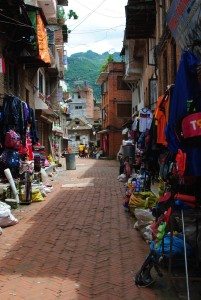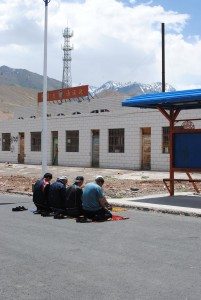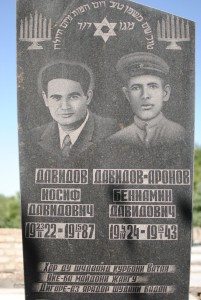
Kathmandu
She said it in a whisper, subtly gesturing at a large, wooden building. It was dark, Kathmandu’s streetlights long turned off, and the moonlight gave her doe-eyed face an otherworldly glow.
“Goddesses live here.”
She kept walking, through the winding back alleys of Patan, and casually explained that in this tiny temple in that dirty alley lived goddesses. Not mythical goddesses, or spiritual ones: living, breathing, human goddesses called Kumaris. Or so she’d always been told.
A Kumari, she explained, is discovered when she is very young, usually around three or four, and tends to be breathtakingly beautiful. Sometimes she is brought from the far, vivid green reaches of Nepal, from a mountain village that hardly has roads, let alone running water or electricity. Other times, she emerges from a compound off of Kathmandu’s winding, muddy roads, underfed and city-hardened. No matter where she is found, she is brought, young and innocent, into the dark chambers of the Kumari temple, her family at her side. Dolled up and pampered, she, along with the other “chosen” ones, witness horrible sacrifices and other twisted rituals. Masochism in various forms. Animals slaughtered. Body parts burned.. The sort of things at which a little girl would usually scream in terror, but a Kumari a supposed ancient, wise soul, sits and watches, in silence What some might see as unnecessary, ritualistic sadism and violence, she sees as reverence and holiness. Nothing to cry about.

The girls who do cry and scream—they are eliminated, sent back to their ordinary lives. Their families, who bear the burden of their daughters’ shame, follow with faces lowered, pride scattered around their often bare feet. They are seen as failures, but they are allowed to return to normalcy. Those chosen as Kumaris will never know anything resembling normalcy again.
And so the little Kumaris remain, calm witnesses, sitting with kohl-rimmed eyes and jewelry- laden wrists while blood spatters the bottoms of their saris. If they last through the spectacle and refuse to scream in the face of horror, they are accepted as goddesses, and brought into the inner sanctum, where they will remain until they reach puberty. They are worshipped and adored, for their beauty, and for their stoicism.

Until they mature, that is. Once they acquire the first signs of womanhood, their lives, in essence, are over. They rarely marry, for it’s bad luck to marry a Kumari. During their reign as goddesses, they aren’t educated, because why would divine beings need schooling? Often they return to the places whence they came a decade earlier and live out the remainder of their lives in the celibate, quietm residually proud bosoms of their families.
Nepal is the sort of place where, somehow, a harem of goddesses doesn’t seem entirely out of the ordinary. The mountains look covered in vibrant green quilts, textured by rice terraces and farmland swollen with rain, and incense wafts in the air—the leap to the divine isn’t too far. But then the garbage speckling the rice terraces comes into focus or the stench of open sewers taints the lingering incense. And after ten years of worship a Kumari is sent home, expired and alone, exiled from the land of magic.
Xinjiang
At the entrance to China, there is a gate. A wrought-iron gate, complete with golden dragons, golden spikes, and not-so-golden barbed wire wringing its perimeter. It’s a gate to inspire awe, to remind those who see it that they are in China, and China is powerful, goddammit.
With the help of four officers in full fatigues, complete with bulletproof vests and too-shiny aviators, the gate slides open, revealing a perfectly paved, perfectly lined stretch of road, reaching into the Tian Shen Mountains. It’s a far cry from the potholed, blockaded road that leads to the gate from Kyrgyzstan.

The gate and the road and the officers and the guard dog that stands at attention during the extensive passport check have the desired effect. Nerves and fear mount, and the beginning of the seven kilometer walk to the real border check feels somewhat like a prisoner march.
But then, as the gate disappears behind the mountains, things begin to crumble. Everything is still striving towards that authoritarian perfection, but the lines on the road have become a bit crooked. Their color is something other than their original bright yellow, and the mile markers are a bit faded. Cracks extend in webs from the edges of the road, cold and time threatening the integrity of that initial, prison-like façade.
Farther down the road, the cracks grow deeper, and the lines more faded, until suddenly, they stop. Out of nowhere pops an abandoned town, complete with broken glass, shattered windows, and carnival lights long since burnt out. The streets are filled with garbage, and the buildings look burnt out. A few men pray in the street for lack of a mosque, and there is a broken radiator perched on the sidewalk. Off to the side, there’s something that looks like a government building, because why else would two armed soldiers nap in the sunlight in front of it? Welcome to the China behind the gate.

Xinjiang, the region that lies behind the abandoned town, is one that wears a mask. A government- sculpted, poorly fitted mask. The highways, for the most part, are paved, and the road markings, though rarely regarded, are visible. But they run through fields of rubble, spotted with shiny new oil fields. Traditionally, it is a Uyghur region, with a culture more akin to that of Central Asia than its Eastern Asia counterparts: a land of kebabs and low-lying mud houses. But, in recent years, largely thanks to its natural resources, it has become the “new frontier” of the Handominated government. And the Han-dominated government prefers skyscrapers to mud houses. And standardized Mandarin characters to the Arabic script of Uyghur. And stir fry to kebab. The result? Demolition, literal and cultural.
Today, a cursory glance down the main drag of Kashgar reveals an avenue like any you’d find in any Chinese city, streets lined with hot pot restaurants and blinking fluorescent lights. On the surface, as with the gate, the government has done an incredible job of asserting its authority. But something else bubbles beneath the surface. Something powerful. Something real. Some, pointing at the Uyghur “attacks” in May, call it terrorism. Ignoring the lack of evidence, or of arrests, or even of real suspects, they point to the bombing in a Uyghur marketplace, and unquestioningly deem it terrorism. But looking behind the front row of Chinesebuilt buildings at houses pulled down by government-sponsored bulldozers, at the subtly racist anti- terrorism posters—depicting caricature-like, weapon-wielding Uyghur men, bearded, weathered, and prayer-capped, shaking hands with smiling, upstanding Chinese policemen, with captions like “Cooperate for a peaceful Kashgar” or, more bluntly, “Cooperating with terrorist activity is strictly prohibited”—one cannot help but be struck by a certain tragic, innocent humanity. Prodding at the babies’ clothes trapped beneath the bricks of a destroyed home, standing in front of the mosques torn apart brick by brick, the terrorist assumption is eclipsed by a different word: desperation, of a culture under attack, a culture which threatens to expose the dark underbelly of the centralized regime. And the regime, threatened by the strength of that which they don’t understand, attacks. In lieu of understanding, they demolish.
Uzbekistan
Bukhara, Uzbekistan, looks a bit like Disney World. At its center, it’s perfectly clean, with burger joints and colorful lights dancing off of a man-made pond. Welldressed, well-fed people lounge in the sunlight, sipping chai, or beer, and their pudgy children dip their toes in the water while their parents are otherwise occupied. It’s an oasis, and, for a moment, you can forget that it sits in the middle of a country with a personal GDP near that of India. And then you start walking.
Any local asked where the “mahallah yahoodi” (Jewish Quarter) is will give you a vague hand gesture, or a half-hearted “anja” (there). Sometimes they’ll even shrug their shoulders, or just say “nazdeek” (near). It’s a place that, to them, means no more than a couple streets with a single, dilapidated synagogue. But the mahallah is what remains of a once thriving Bukharan Jewish community. In its maze-like streets lived thousands and thousands of Persian-speaking followers of David, once the rulers of the silk road, who had suffered greatly at the hand of the Soviet Union. And now, a shrug.

At its center should be the fabled Bukharan Jewish cemetery, resting place of thousands upon thousands of the now diminished tribe. But now, down filthy road after filthy road, once great wealth and power is reduced to splintered doors and crumbling roofs. The air smells like garbage and feces and smoke. Children run by, their bare feet stained black. They smile, but their mothers shoot pained looks from open windows.
By the time you reach a landfill, resignation feels imminent. The smell of garbage is overwhelming, and the air is thick with woodsmoke. But a small girl playing in the dirt knows the way. She points to the landfill. Perhaps she is making a joke. She’s stonefaced. She gestures again, this time beyond the landfill. And then you see it.
Among the garbage, its blue dome gleams. In contrast to its surroundings, the cemetery’s entrance is pristine, with towering sandstone walls trimmed in blue. Without the Star of David on the top of the dome, it could easily be mistaken for a mosque.
A kindly groundskeeper, emaciated and toothless, guards the door. But then he steps aside, revealing his bounty. Graves stretch for what seems like eternity. Around the periphery, they’re new. Shiny. Adorned with race cars, even. Their Stars of David shine pridefully in the afternoon light. They’re gleaming, unbroken, sometimes even flower- adorned, all with death dates later than 1990.

The land beyond the outer perimeter, though, looks empty. It’s dry, with patches of yellow grass and broken, uneven stones to mark the graves of those who died when their religion was a sin. They’re nameless. Identical in their broken faces, crumbling into the garbage and slum that surrounds them.
Staring at the headstones, looking for some indication of whose they are, reveals nothing. Squinting to try and make out some detail, some writing, is fruitless. Lingering makes the groundskeeper visibly uneasy; the desert sun is scorching, and no matter what, the stones remain anonymous, taking with them their lost culture. It’s tempting to stay, for fear that to leave means to forget. But eventually, there’s no other choice but to go. Back to the pond and the beers and the Disney World, pushing this forgotten world further into the past.
Great read.